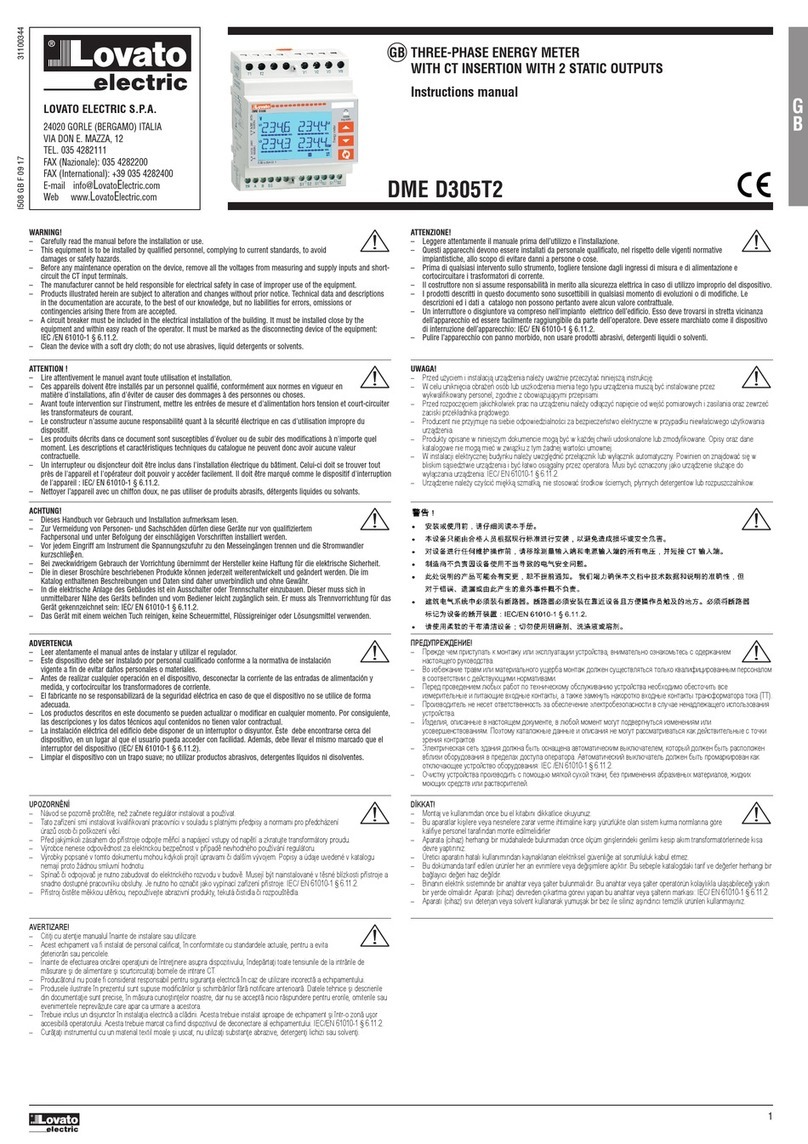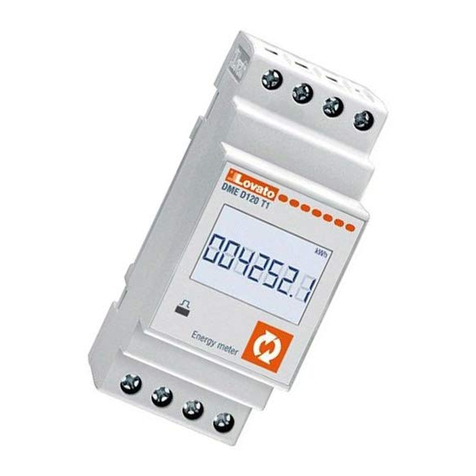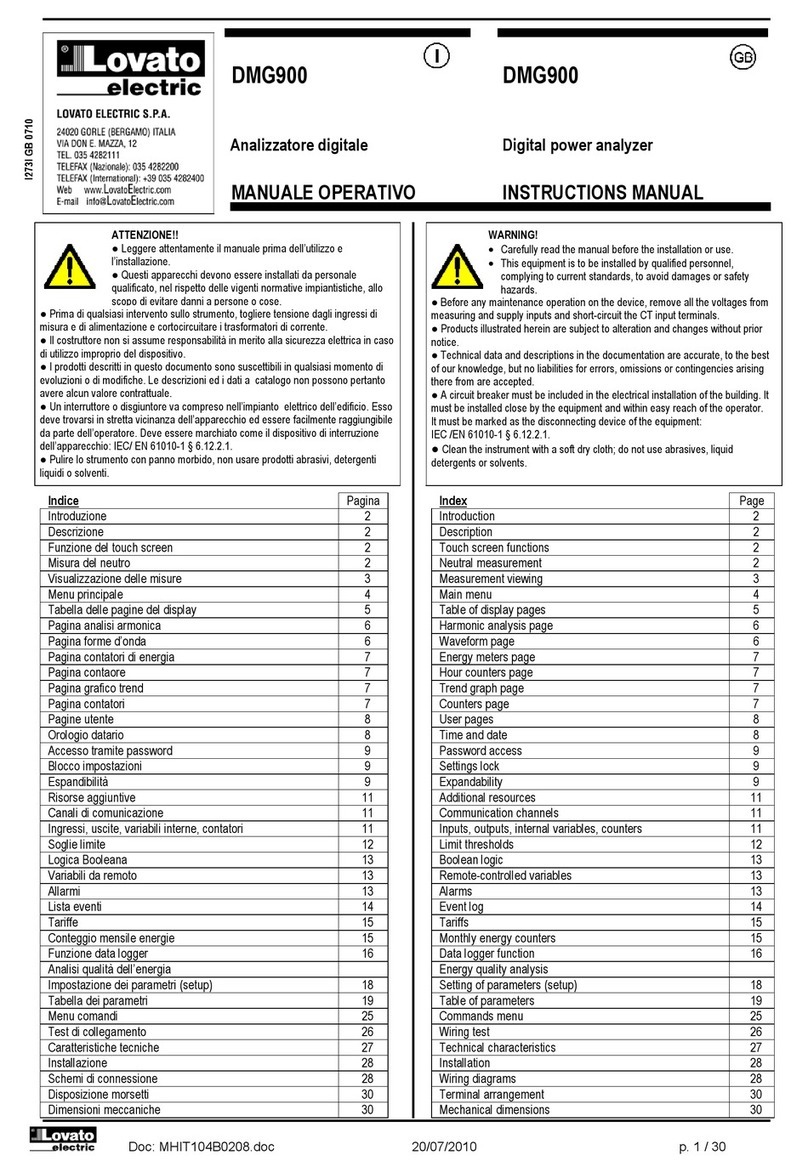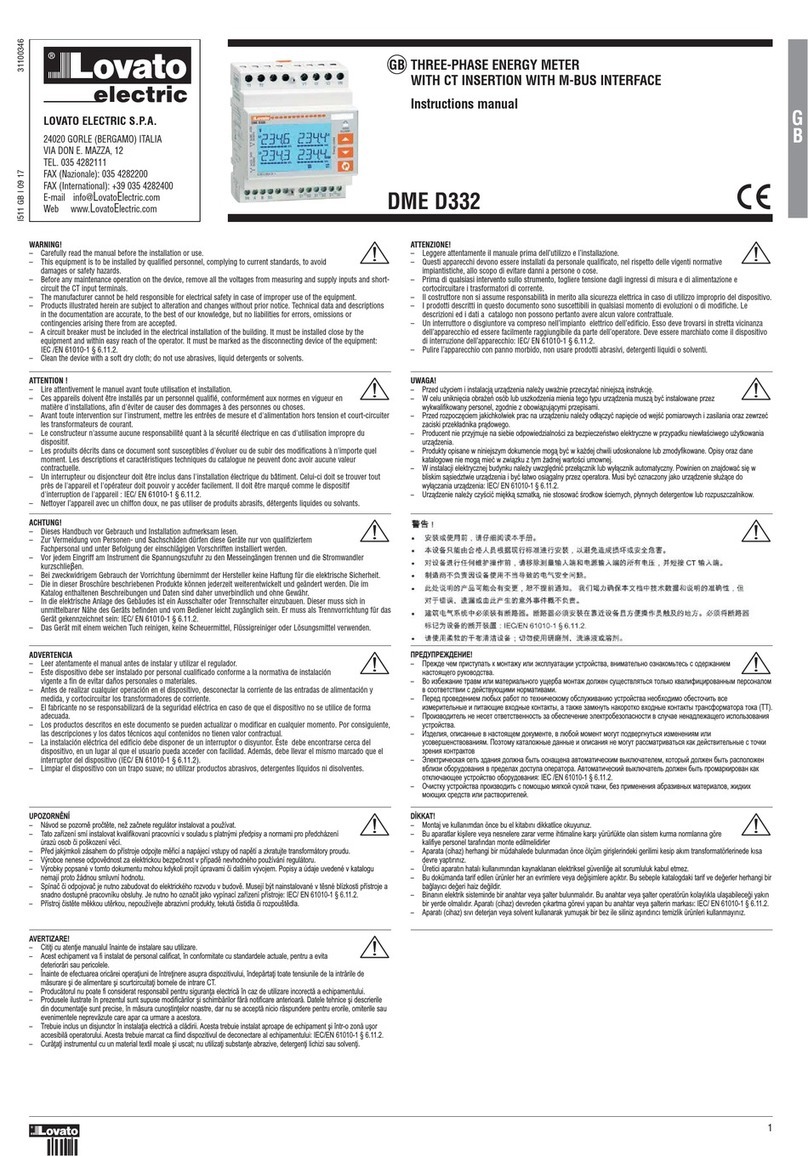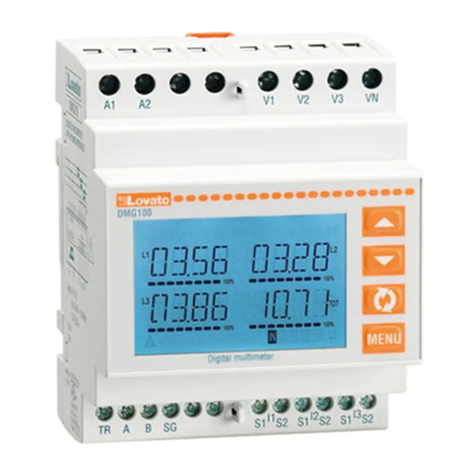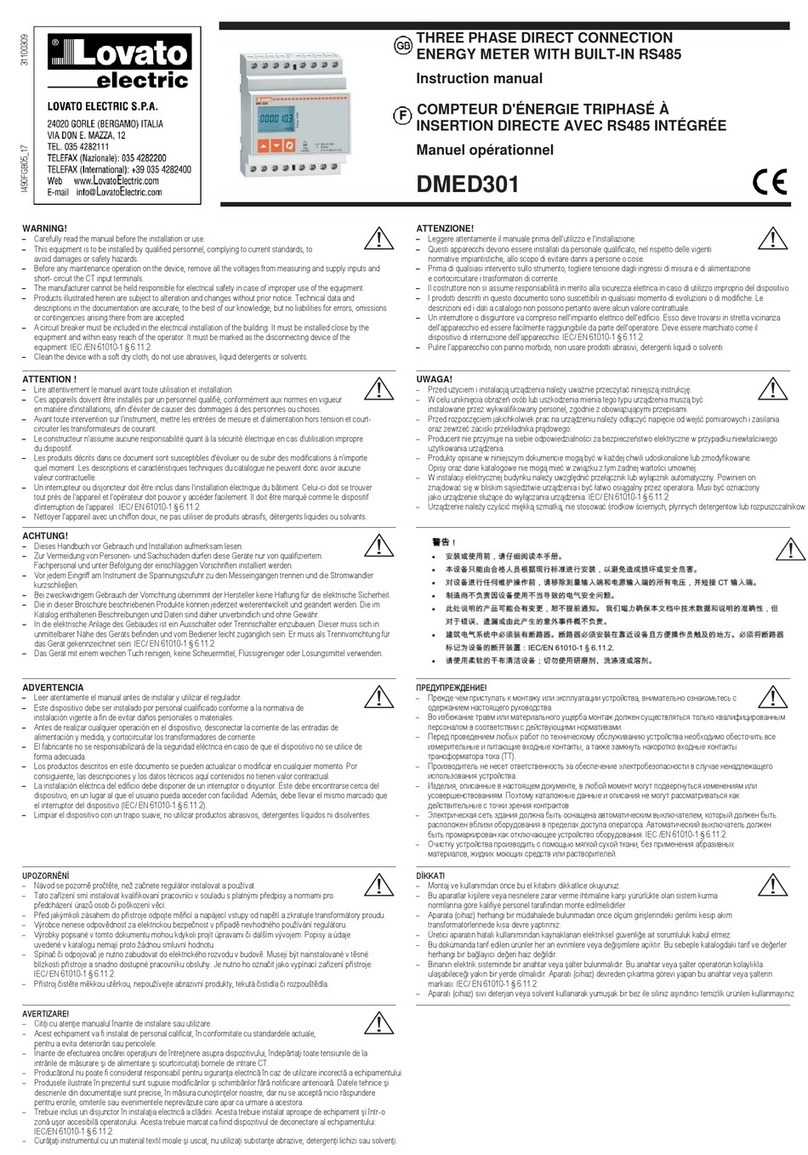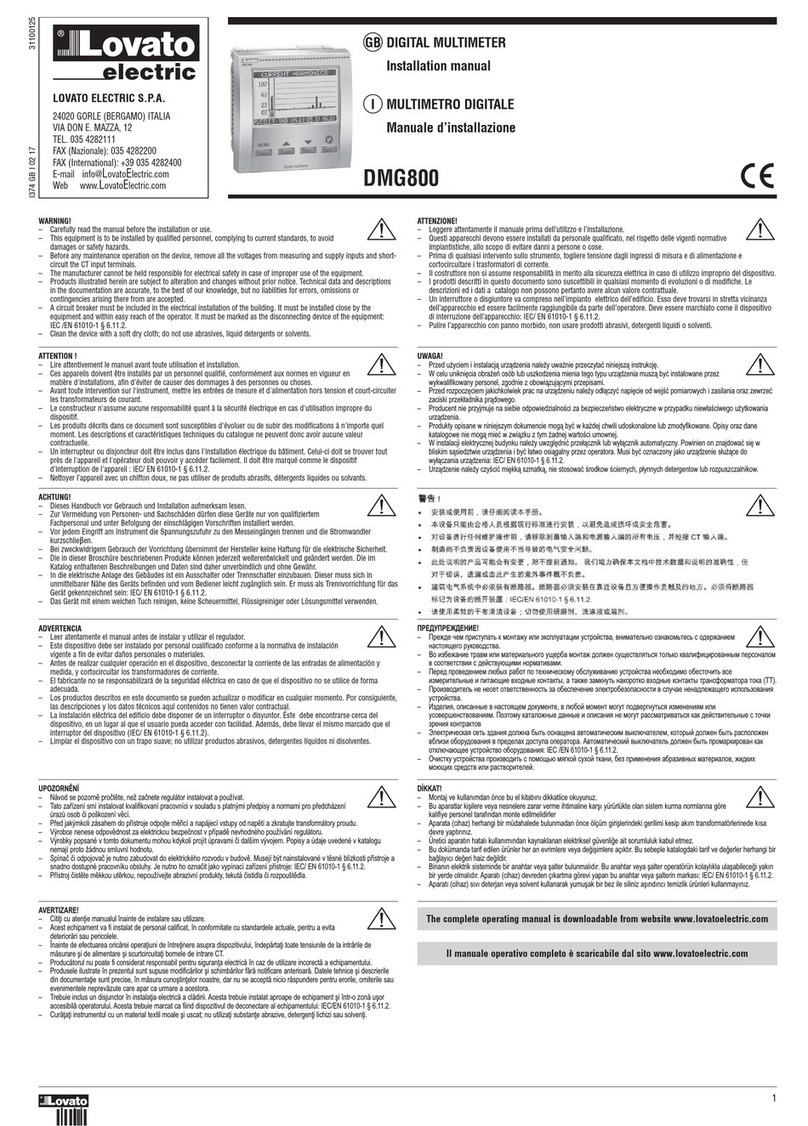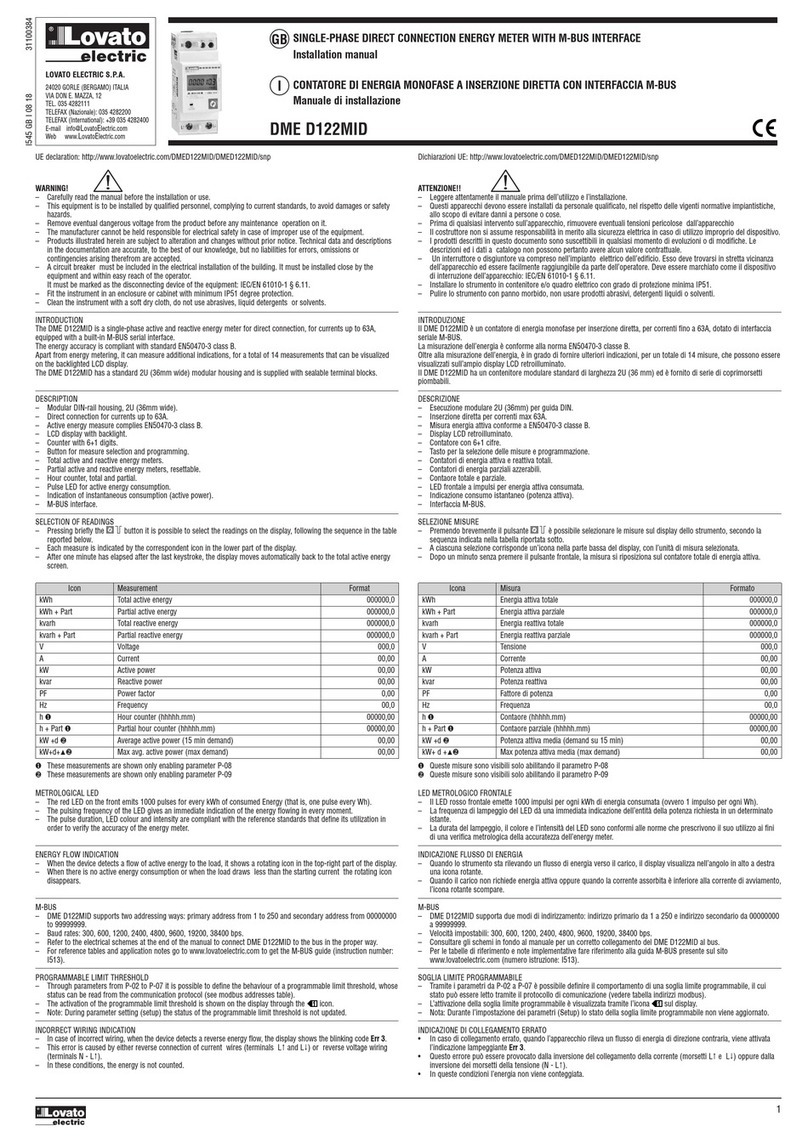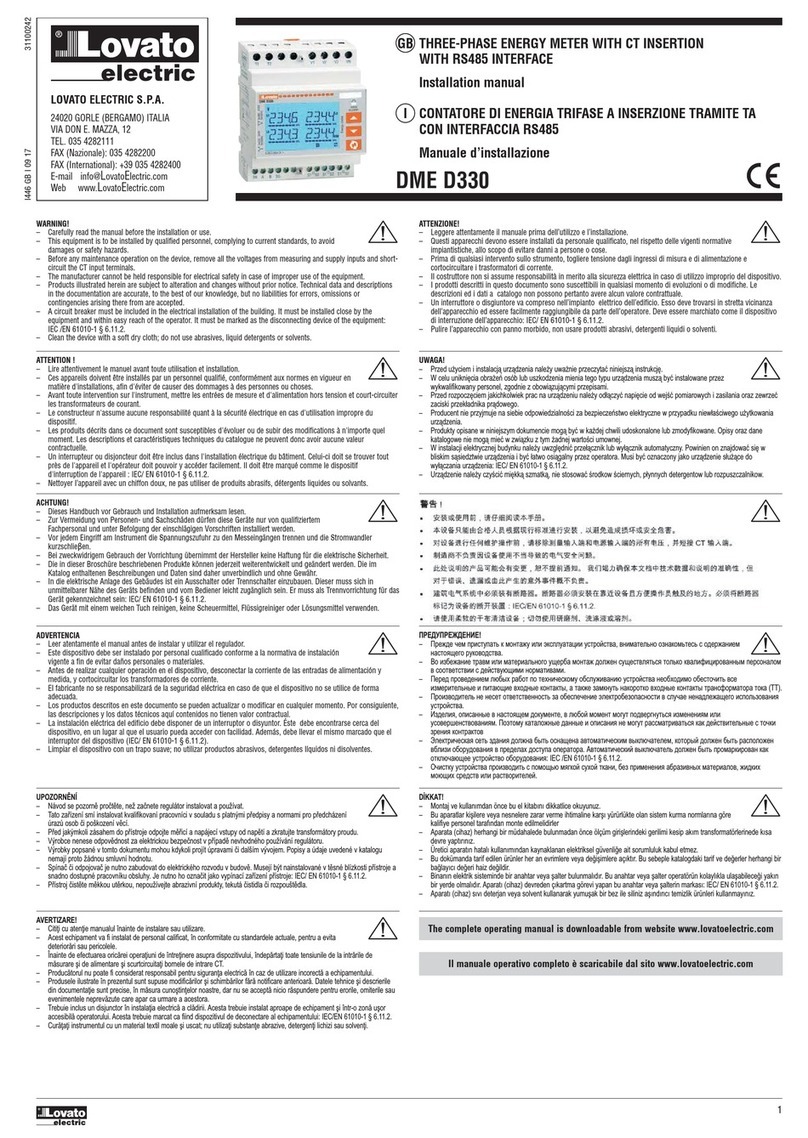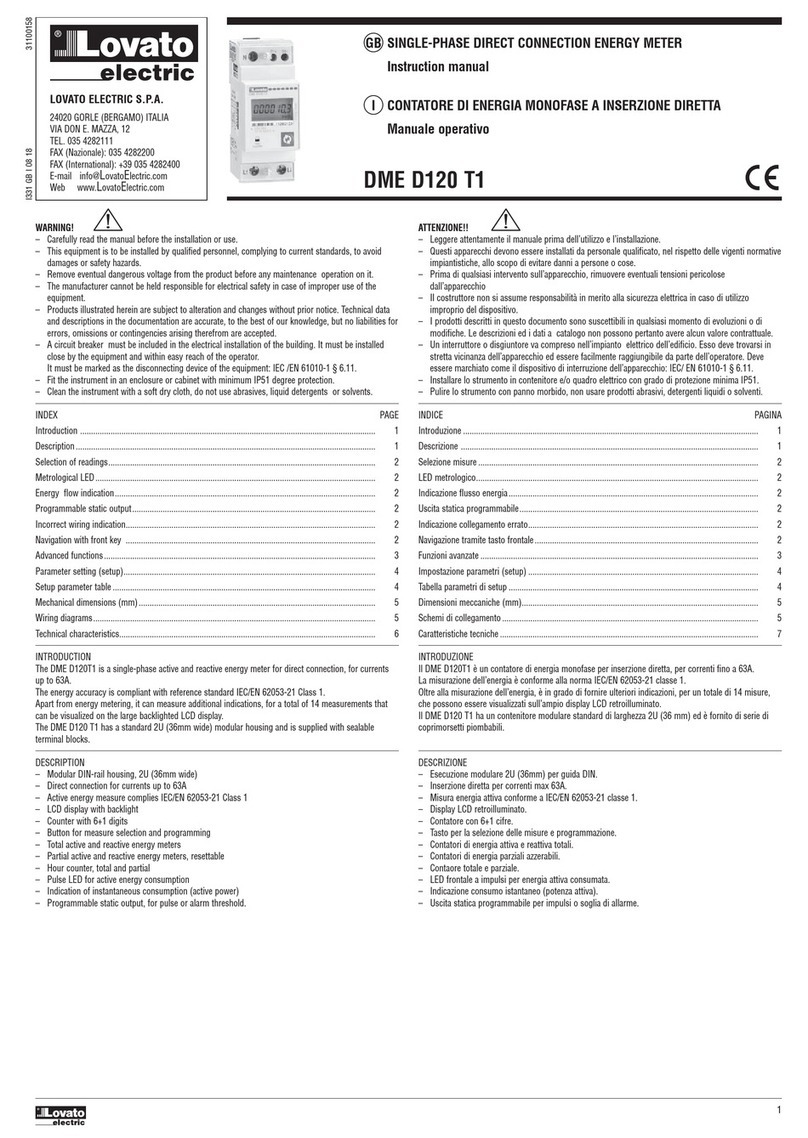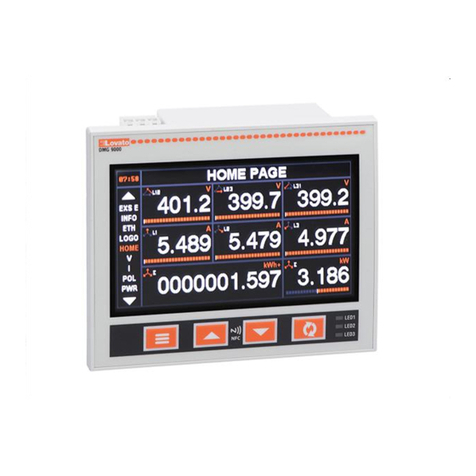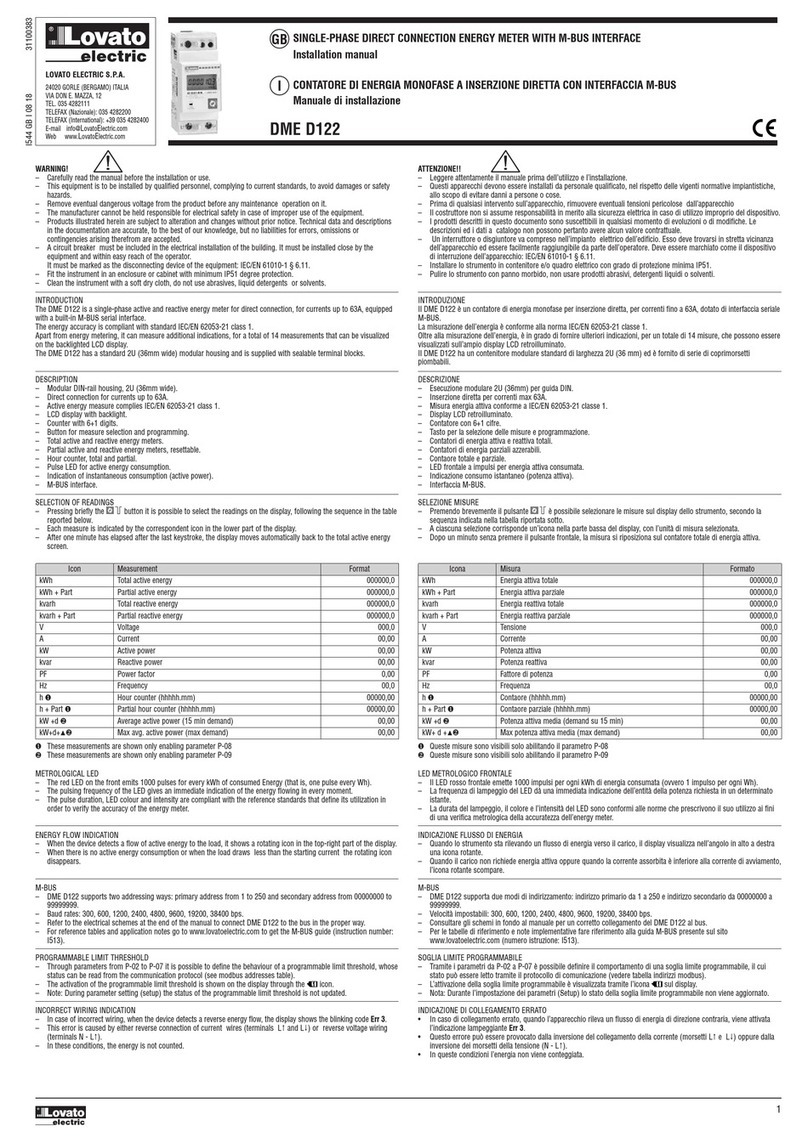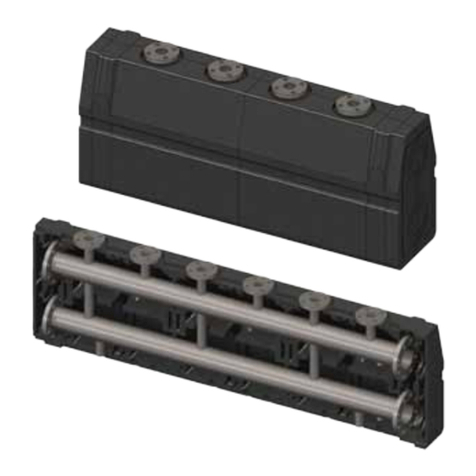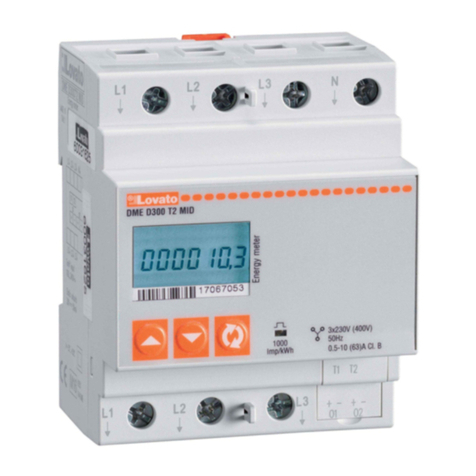
4
PROGRAMMAZIONE STRUMENTO
Per il corretto funzionamento dei multimetri è necessario
programmare il rapporto di trasformazione dei trasformatori
amperometrici utilizzati.
PROGRAMMAZIONE RAPPORTO DI TRASFORMAZIONE DEI
TRASFORMATORI AMPEROMETRICI ESTERNI.
La programmazione del rapporto TA, inteso come rapporto tra
primario e secondario (esempio con TA 1000/5 si dovrà impostare
200), deve essere effettuata con i pulsanti posti sul fronte:
dopo aver dato alimentazione ausiliaria allo strumento ed atteso
qualche secondo (all’atto dell’accensione tutti i LED e display
lampeggiano alternativamente all’indicazione della versione firmware),
premere contemporaneamente i pulsanti A e C, sul display G apparirà
la scritta SET e sul primo display F la scritta CT , sul display centrale F
il valore del rapporto di trasformazione (impostato su 1 dal
costruttore).
Tenere premuto il pulsante B per incrementare il valore o premere C
per decrementare il valore (la variazione è di una unità per unità).
Per velocizzare l’operazione, tenere premuto costantemente il
pulsante B o C, la variazione avverrà successivamente per decine e
per centinaia. Rilasciando e ripremendo il pulsante si ritornerà a
incrementare o decrementare il valore per unità.
Per confermare la programmazione ripremere il pulsante A (se per 10
secondi non vengono premuti pulsanti lo strumento uscirà
automaticamente dalla programmazione).
NOTE
Quando il rapporto di trasformazione impostato supera 999 il valore
1000 è indicato con l’accensione del LED k; ad esempio per
impostare il valore 1200 si visualizzerà 1.20 sul display centrale F con
l’accensione del LED k.
I valori impostati vengono mantenuti anche in mancanza
dell’alimentazione ausiliaria.
Non sono necessarie altre programmazioni tenendo in considerazione
che lo strumento è completamente autorange (commutazione
automatica della scala di visualizzazione e virgola mobile).
INSTRUMENT SET-UP
For a proper and correct use of the instrument, it is necessary to
program the transformation ratio of the current transformers used
.
TRANSFORMATION RATIO PROGRAMMING FOR THE EXTERNAL
CURRENT TRANSFORMERS
The CT ratio programming, considered as ratio between primary and
secondary (e.g. with a 1000/5 CT, one must program 200), is made
through the front push buttons, as follows:
After a few seconds after the instrument supply (all LED’s and
displays flash at switch on after the version firmware indication),
simultaneously press buttons A and C. The wording SET and CT will
respectively appear on displays G and L1 and the transformation ratio
value on L2 (factory set at 1). By pushing button B, the value
increases while button C, decreases it (the variation is unit by unit).
To speed up this operation, keep button B or C pressed and the
variation takes place by tens and then by hundreds. Unit variation
returns by releasing and pushing the button again.
To confirm programming, press button A again. If no button is
pushed for 10 seconds, the instrument will exit programming.
NOTE
When the programmed transformation ratio exceeds 999, the value of
1000 is indicated by the illuminated k LED. For example, the value of
1200 will be shown as 1.20 on the L2 display and the illuminated k
LED. The programmed values are stored also at the lack of voltage.
No other programming is necessary owing to self-configuration
(automatic switching of the display scale and mobile decimal point).
VISUALIZZAZIONE MISURE
Lo strumento DML è suddiviso in due sezioni distinte:
la prima è composta dai tre display F, dai tasti A e B e dai LED D
la seconda composta dal display G, dal tasto C e dai LED E.
Le due sezioni sono da considerarsi effettivamente come due
strumenti separati in uno, infatti è possibile operare su di una zona
senza modificare la visualizzazione dell’altra (ad esclusione della
visualizzazione dei valori di picco o massimi).
VISUALIZZAZIONE SEZIONE 1
La visualizzazione delle misure viene visualizzata sui display F, dove
vengono rappresentate le tre misure di fase (rispettivamente L1, L2
ed L3) della grandezza indicata dall’accensione di un LED D. Per la
misura delle tensioni concatenate (VL- L) le tre misure si intendono
rispettivamente VL1-L2 VL2-L3 VL3-L1.
Premendo il tasto B si selezionano le varie grandezze visualizzabili
indicate sempre dai LED D.
Premendo il tasto A sul display centrale (L2) verrà visualizzata la
grandezza selezionata in valore trifase (media delle singole fasi per
tensioni, correnti, fattori di potenza, e somma delle singole fasi per le
potenze) con conseguente accensione del LED all’interno del tasto.
Ripremendo lo stesso tasto si ritorna alla visualizzazione delle
grandezze di fase. Notare che l’unità di misura può essere espressa in
kilo o Mega nel caso dell’accensione dei relativi LED.
La visualizzazione del fattore di potenza capacitivo viene
rappresentato con un segno - sul primo digit del display (esempio
lettura -.95 indica un fattore di potenza di 0.95 capacitivo).
VISUALIZZAZIONE SEZIONE 2
Analogamente a quanto avviene nella sezione 1 con il tasto C si
selezionano le grandezze da visualizzare indicate dai LED E (i valori di
tensione si intendono del sistema trifase, la frequenza del canale L1 e
la temperatura dal sensore interno).
MEASUREMENTS DISPLAY
The digital multimeter DML is divided into 2 sections:
–
The first is composed by 3 displays F, buttons A and B and D LED’s.
– One display G, button C and E LED’s compose the second.
The two sections can be considered as separate instruments in one
sole device; in fact, it is possible to work in one section without
displaying anything on the other (excluding the peak value display).
SECTION 1 DISPLAY
The readout display is given on F displays where the three monitored
phases are represented respectively by L1, L2 and L3 of the
parameter indicated by the relative illuminated D LED. For the voltage
between lines measurement (VL-L), the three readings are intended
respectively as VL1-L2, VL2-L3, and VL3-L1.
By pushing button B, the various displayable parameters are selected
and distinguished by the corresponding illuminated D LED.
By pushing button A, the selected parameter, given as three-phase
value (average value for each single phase for voltage, current or
power factor monitoring and total of each single phase for power) is
shown on the middle display (L2) and the LED on the button itself
switches on. Pressing this same button again, the display returns to
phase indication.
The unit of measure can be expressed as kilo (k) or mega (M) in the
case one of corresponding LED’s is switched on. The display of a
capacitive power factor value is given by a minus (-) sign before the
first digit (e.g. the -.95 reading indicates a capacitive power factor
of 0.95).
SECTION 2 DISPLAY
As given above for section 1, by pushing button C, one can display
the parameters indicated by the E LED’s (voltage values are intended
as three-phase systems, the frequency of L1 branch and the
temperature detected by the internal sensor).
PEAK
®
DML 1
PEAK
DML 2
®
DML1 - DML3
DML2 - DML4
